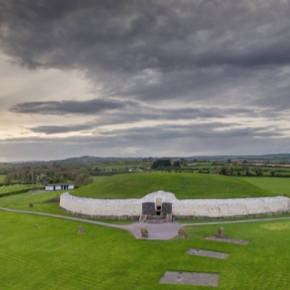
Five of the Oldest Buildings in the World
The world is full of fascinating buildings, and it seems more and more are being constructed everyday using the latest construction techniques and materials. However, behind the modernisation of today’s buildings, there is an abundance of different points in history that contain rich, cultural backgrounds. From the Stone Age to the Egyptian Kingdom, here are five of the world’s oldest buildings that have stood the test of time.
Megalithic Temples of Malta
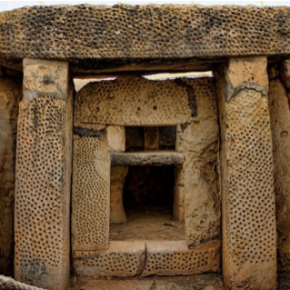 Dating back to 3600 BC and 700 BC, the Megalithic Temples of Malta are considered to be the oldest free-standing structures on earth. The temples were built during three phases of cultural revolution – Ġgantija (3600-3200BC), Saflieni (3300-3000BC) and Tarxien (3150BC-2500BC). Nowadays, the temples are managed by the Heritage of Malta.
Dating back to 3600 BC and 700 BC, the Megalithic Temples of Malta are considered to be the oldest free-standing structures on earth. The temples were built during three phases of cultural revolution – Ġgantija (3600-3200BC), Saflieni (3300-3000BC) and Tarxien (3150BC-2500BC). Nowadays, the temples are managed by the Heritage of Malta.
The Maltese temples were constructed in several locations across Malta, with each individual site having its own unique features. However, all of the temples share a common architecture, such as the temple’s internal walls being made out of orthostates – a row of large stone slabs. The main variations in the temple’s construction lies in the number of chambers, which are referred to as ‘apses’, with some having three, four, five or even six. The space between the apses’ walls was filled with loose stones and earth, which sometimes contain pottery shards.
The external walls of the temples were typically made of coralline limestone, a material that is significantly harder than the globigerina limestone used in the temple’s internal sections. The globigerina was used for decorative elements and carvings within the temples, such as trees, plants and animals.
The Cairn of Barnenez
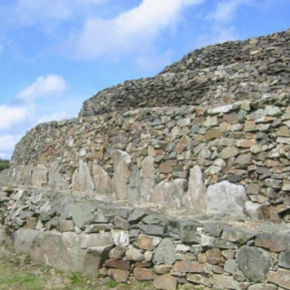 Located in Brittany, France, the Cairn of Barnenez is a Neolithic (the last part of the stone age) monument and is considered to be one of the earliest megalithic (stone) monuments in Europe. Today, the Barnenez is 72m long, 25m wide and over 8m high.
Located in Brittany, France, the Cairn of Barnenez is a Neolithic (the last part of the stone age) monument and is considered to be one of the earliest megalithic (stone) monuments in Europe. Today, the Barnenez is 72m long, 25m wide and over 8m high.
The Carin of Barnenez was constructed in two phases, with the first between 4850-4250BC and the second between 4450-4000BC. It was built using 13,000-14,000 tons of stone and contains 11 chambers made of granite and slate that can be accessed through separate passages. Originally, all the chambers were enclosed by the mound, however, modern quarrying has causing several of them to become partially exposed. There are also nine narrow dry-stone walls which are covered with slabs and lead to corbelled chambers.
One cubic metre of the Barnenez contains 1,500kg of stone. The first phase of the monument, Cairn 1, had a volume of approximately 2,000 cubic metres and was built from 1,000 tons of granite and 3,000 tons of dolerite. Overall, it would have required 15,000 – 20,000 working days, or 200 workers three months (assuming a 10-hour day) to build Cairn 1 alone!
Knap of Howar
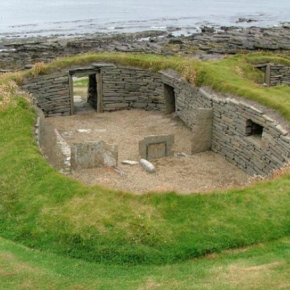 Situated in Scotland, the Knap of Howar is a Neolithic farmstead and is considered to be the oldest preserved stone house in Europe. It was occupied between 3700-2800 BC and consists of two adjacent, rectangular buildings facing the sea. One of the buildings served as the living quarters for the family and the second was utilised as a workshop and for storage space.
Situated in Scotland, the Knap of Howar is a Neolithic farmstead and is considered to be the oldest preserved stone house in Europe. It was occupied between 3700-2800 BC and consists of two adjacent, rectangular buildings facing the sea. One of the buildings served as the living quarters for the family and the second was utilised as a workshop and for storage space.
The stone walls of the farmstead stand to 1.6m would have been freestanding during its time of occupation – there were certainly no raft foundations here. Both the living quarters and workshop were reasonably spacious at 10x5m and were separated by upright slabs. The holes in the slabs suggest the roof would have been formed from turf raised above the walls. The stone beds and shelves have been preserved perfectly intact.
Newgrange
 Situated in County Meath, Ireland, Newgrange is a prehistoric monument and was built around 3200BC, making it older than Stonehenge and the Egyptian pyramids. Several amounts of human bones and possible grave offerings have been found inside the tombs.
Situated in County Meath, Ireland, Newgrange is a prehistoric monument and was built around 3200BC, making it older than Stonehenge and the Egyptian pyramids. Several amounts of human bones and possible grave offerings have been found inside the tombs.
There are 547 greywake (an earthy rock) slabs that make up the inner passage, chambers and the outer kerbstones – some of these came from approximately 5km away at the rocky beach in County Louth. The façade and entrance were constructed using white quartz cobblestones from the Wicklow Mountains, gabbro cobbles from the Cooley Mountains, granodiorite cobbles from the Mourne Mountains and banded siltstone from the shores of Carlingford Lough. The granite inside also came from the Mourne Mountains.
Geological analysis has discovered that the thousands of pebbles making up the cairn would have weighed approximately 200,000 tonnes and originated from nearby river terraces of the Boyne. None of the structural slabs were quarried as they bear signs of being weathered naturally; meaning they must have been collected and transported uphill to the site.
Pyramid of Djoser
 The Pyramid of Djoser was constructed between 2667–2648BC and is the resting place of Djoser – the second king of the 3rd dynasty of the Egyptian Old Kingdom, who reigned for 19 years.
The Pyramid of Djoser was constructed between 2667–2648BC and is the resting place of Djoser – the second king of the 3rd dynasty of the Egyptian Old Kingdom, who reigned for 19 years.
This innovative tomb, which dominates the Saqqara landscape in Egypt, is surrounded by a light Tura limestone wall that’s 10.5m high, with the overall structure imitating mudbrick. The outside wall is completely surrounded by a trench dug in the underlying rock, measuring 750m long and 40m wide.
A roofed passageway entrance with a limestone ceiling was constructed to look like tree trunks and leads to a stone imitation of two open doors – this area houses 20 pairs of limestone columns that were built to look like bundles of plant stems.
The burial chamber was constructed out of four courses of well-dressed granite and had one opening, which was sealed by a 3.5-ton block after the burial. Unfortunately, nobody was ever found as the tomb had been robbed.
Latest news
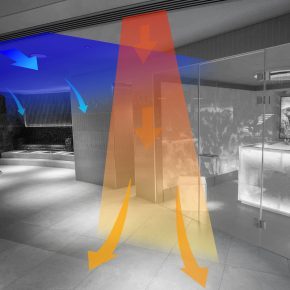
1st April 2025
Gilberts Takes Thermal Comfort to New Heights
Gilberts Blackpool is continuing to build on its reputation as a pioneer with the unveiling of ThermaAstute™ – the most extensive range of thermally sensitive diffusers in the market.
Posted in Air Conditioning, Articles, Building Industry News, Building Products & Structures, Building Services, Facility Management & Building Services, Heating, Ventilation and Air Conditioning - HVAC, Innovations & New Products, Restoration & Refurbishment, Retrofit & Renovation, Sustainability & Energy Efficiency
1st April 2025
University of Bath Student Helps Vent-Axia Win Two Environmental Industry Awards
Leading ventilation manufacturer, Vent-Axia, is delighted that the valuable work University of Bath student Roben Els undertook during an industry placement at the company contributed to it winning two environmental industry awards.
Posted in Air Conditioning, Articles, Awards, Building Industry Events, Building Industry News, Building Products & Structures, Building Services, Heating, Ventilation and Air Conditioning - HVAC, Recruitment, Retrofit & Renovation, Sustainability & Energy Efficiency, Training
1st April 2025
Ahmarra: Fire Doors Designed for Hospitals & Healthcare Environments
Ahmarra is a leading UK specialist in fire doors for healthcare environments, having manufactured and installed thousands of bespoke doorsets for NHS hospitals across London and the South East.
Posted in Access Control & Door Entry Systems, Accessibility, Acoustics, Noise & Vibration Control, Architectural Ironmongery, Articles, Building Industry News, Building Products & Structures, Building Services, Building Systems, Doors, Facility Management & Building Services, Health & Safety, Interior Design & Construction, Interiors, Restoration & Refurbishment, Retrofit & Renovation, Security and Fire Protection, Timber Buildings and Timber Products, Wooden products
1st April 2025
Mitsubishi Electric: New intuitive, IoT-ready centralised controller offers instant access to 400 units
Mitsubishi Electric has launched a new user-friendly, touchscreen controller to offer full remote controllability, monitoring and reporting for up to 400 air conditioning units.
Posted in Air Conditioning, Articles, Building Industry News, Building Products & Structures, Building Services, Facility Management & Building Services, Heating Systems, Controls and Management, Heating, Ventilation and Air Conditioning - HVAC, Information Technology, Innovations & New Products, Pipes & Fittings, Plumbing, Posts, Research & Materials Testing, Retrofit & Renovation, Sustainability & Energy Efficiency
 Sign up:
Sign up: